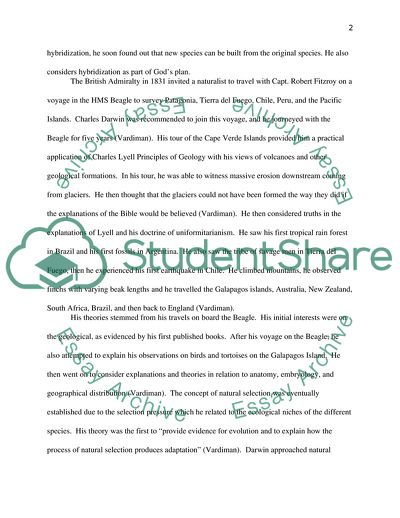Cite this document
(The Discovery of the Theory of Natural Selection Report Example | Topics and Well Written Essays - 1250 words, n.d.)
The Discovery of the Theory of Natural Selection Report Example | Topics and Well Written Essays - 1250 words. https://studentshare.org/biology/1754332-the-discovery-of-the-theory-of-natural-selection-by-darwin
The Discovery of the Theory of Natural Selection Report Example | Topics and Well Written Essays - 1250 words. https://studentshare.org/biology/1754332-the-discovery-of-the-theory-of-natural-selection-by-darwin
(The Discovery of the Theory of Natural Selection Report Example | Topics and Well Written Essays - 1250 Words)
The Discovery of the Theory of Natural Selection Report Example | Topics and Well Written Essays - 1250 Words. https://studentshare.org/biology/1754332-the-discovery-of-the-theory-of-natural-selection-by-darwin.
The Discovery of the Theory of Natural Selection Report Example | Topics and Well Written Essays - 1250 Words. https://studentshare.org/biology/1754332-the-discovery-of-the-theory-of-natural-selection-by-darwin.
“The Discovery of the Theory of Natural Selection Report Example | Topics and Well Written Essays - 1250 Words”. https://studentshare.org/biology/1754332-the-discovery-of-the-theory-of-natural-selection-by-darwin.


